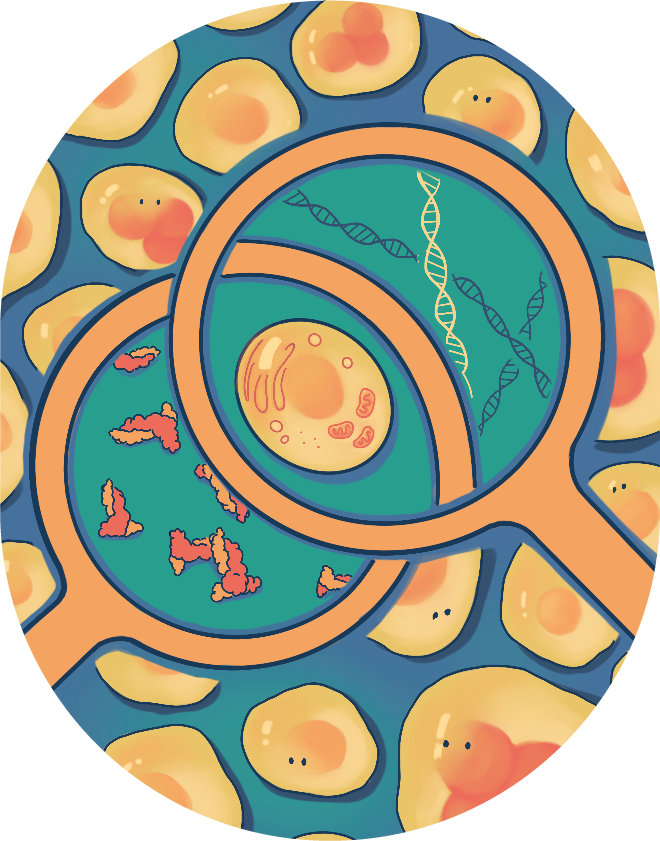Chemotherapy and targeted drugs are effective treatments against cancer, but commonly lead to treatment-resistant cancer cells. Cancer heterogeneity is known to play a significant role in contributing towards this resistance. In order to overcome treatment-resistance in cancer, our goal is to develop new computational methods and algorithms to quantify and visualize cancer heterogeneity to better understand the underlying mechanisms of resistance. To accomplish this goal, we are creating new integrative tools at different scales (such as between cancer subtypes or between individual cells within a single cancer population) and data modalities (such as the transcriptome and the epigenome) to guide therapy.

While all cells within an organism share a similar genome, they exhibit an enormous amount of phenotypic and functional diversity. While this diversity is partly due to internal factors such as the transcriptome and epigenome defining cellular “programs”, even identical cell types exhibit different tissue-specific programs, suggesting cell-external factors contributing to functional diversity. Indeed, cells do not exist in a vacuum, instead constantly communicating and interacting with their surrounding environment. Recent evidence suggests that this communication plays a role in cancer progression and treatment resistance as well, however, the extent of this contribution is unknown. We are developing new methods to better identify cell-cell communication in cancer, ultimately to disrupt cancer-promoting factors.

The cellular diversity within a tumor, or intratumoral heterogeneity, correlates with poor prognosis, relapse, and patient mortality. A major factor in these outcomes may be associated with drug resistance, which is responsible for the majority of cancer patient mortalities while receiving treatments such as chemotherapy and targeted drugs. To better understand treatment-resistant populations, we are developing computational approaches to temporally measure heterogeneity and track populations longitudinally. By understanding the evolution of these complex systems, we may find new avenues to overcome treatment resistance.

Recent advances in genomics technologies have enabled measurements of multiple data modalities at once. While we previously were limited to measuring the transcriptome or the epigenome, we may now measure both data modalities within a single cell, or identify the precise location in situ of a cell in tissue along with their cell surface proteins, or a collection of cells in situ with their transcriptomes. As more technologies expand the multiple data modalities available within individual cells, new methods are required to better quantify and identify factors associated with disease.